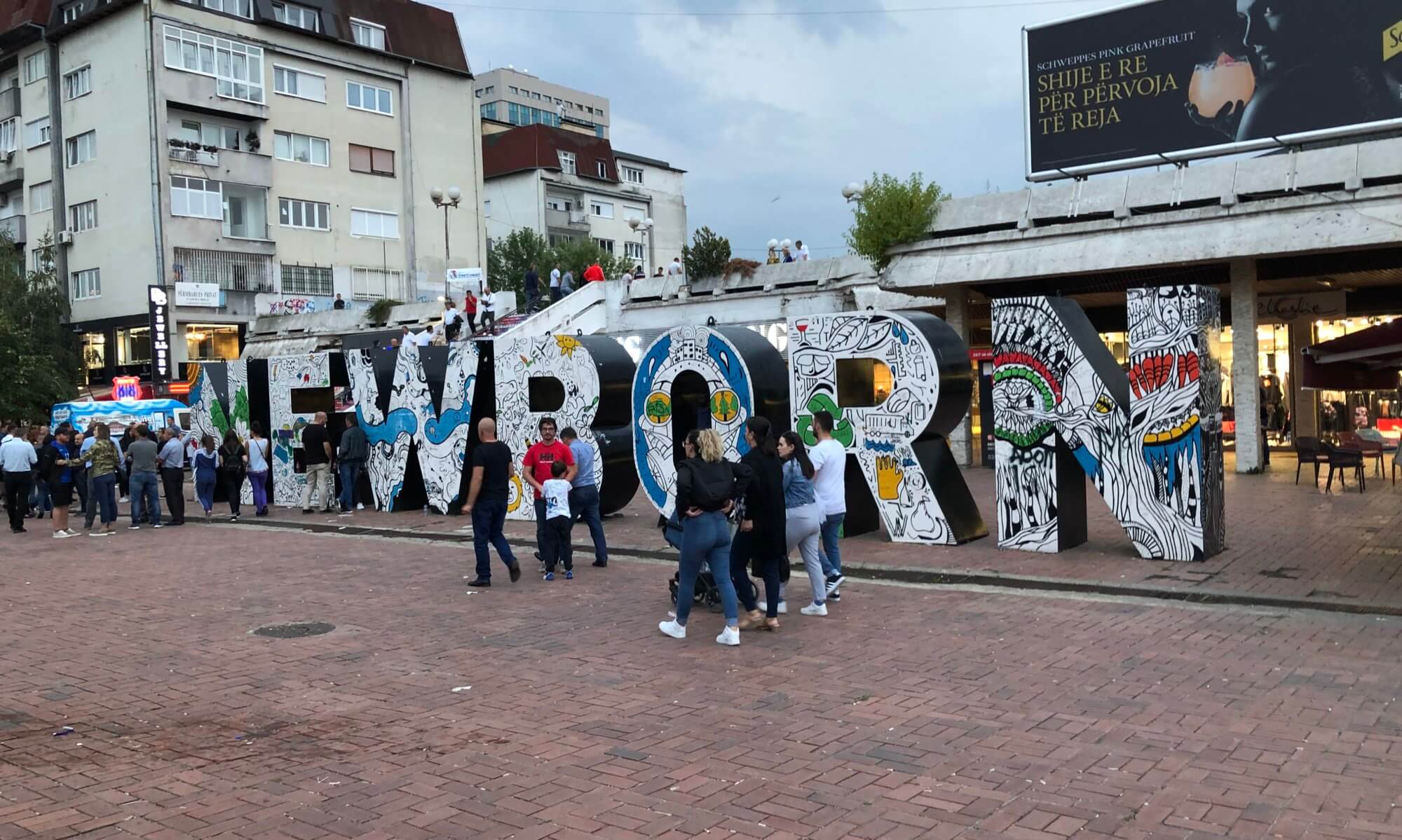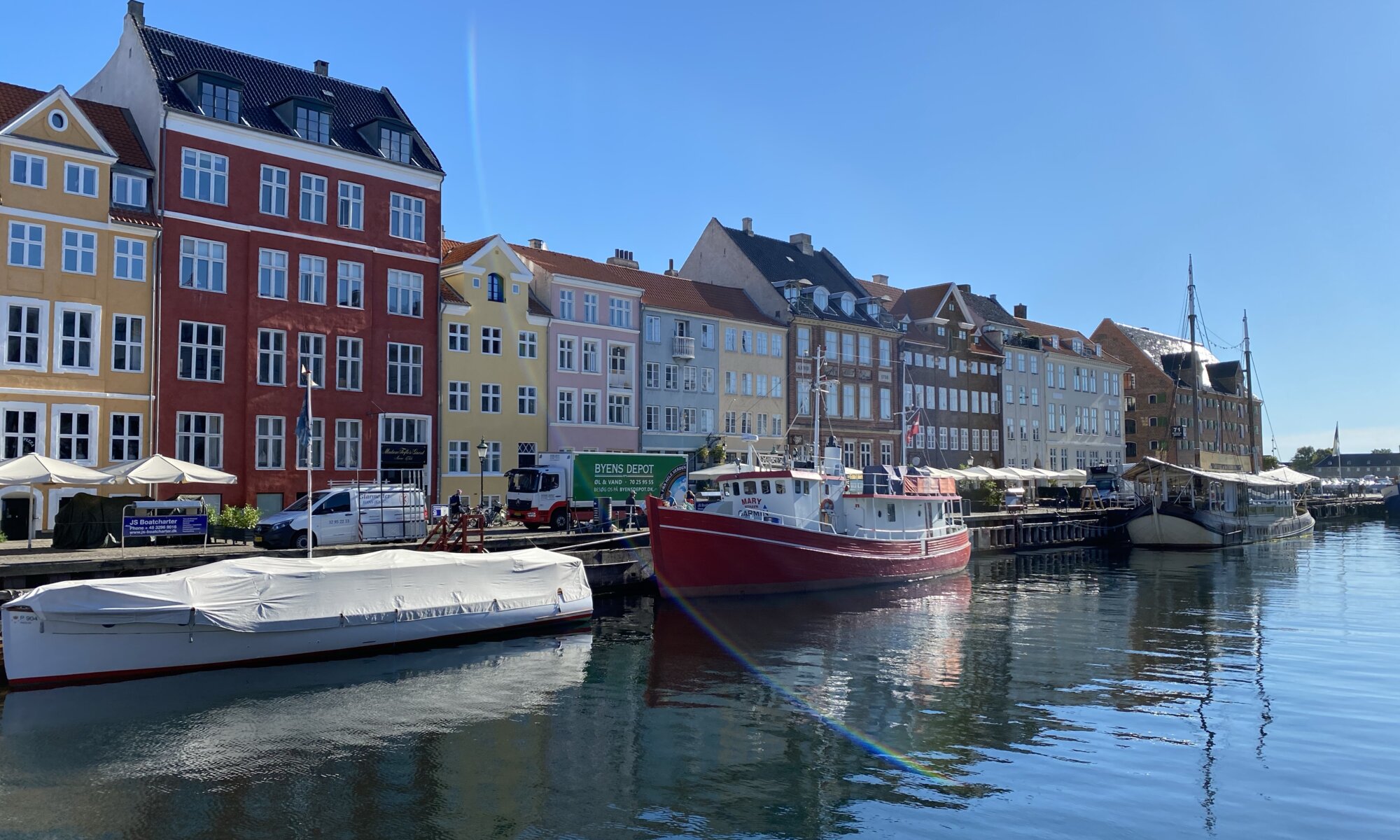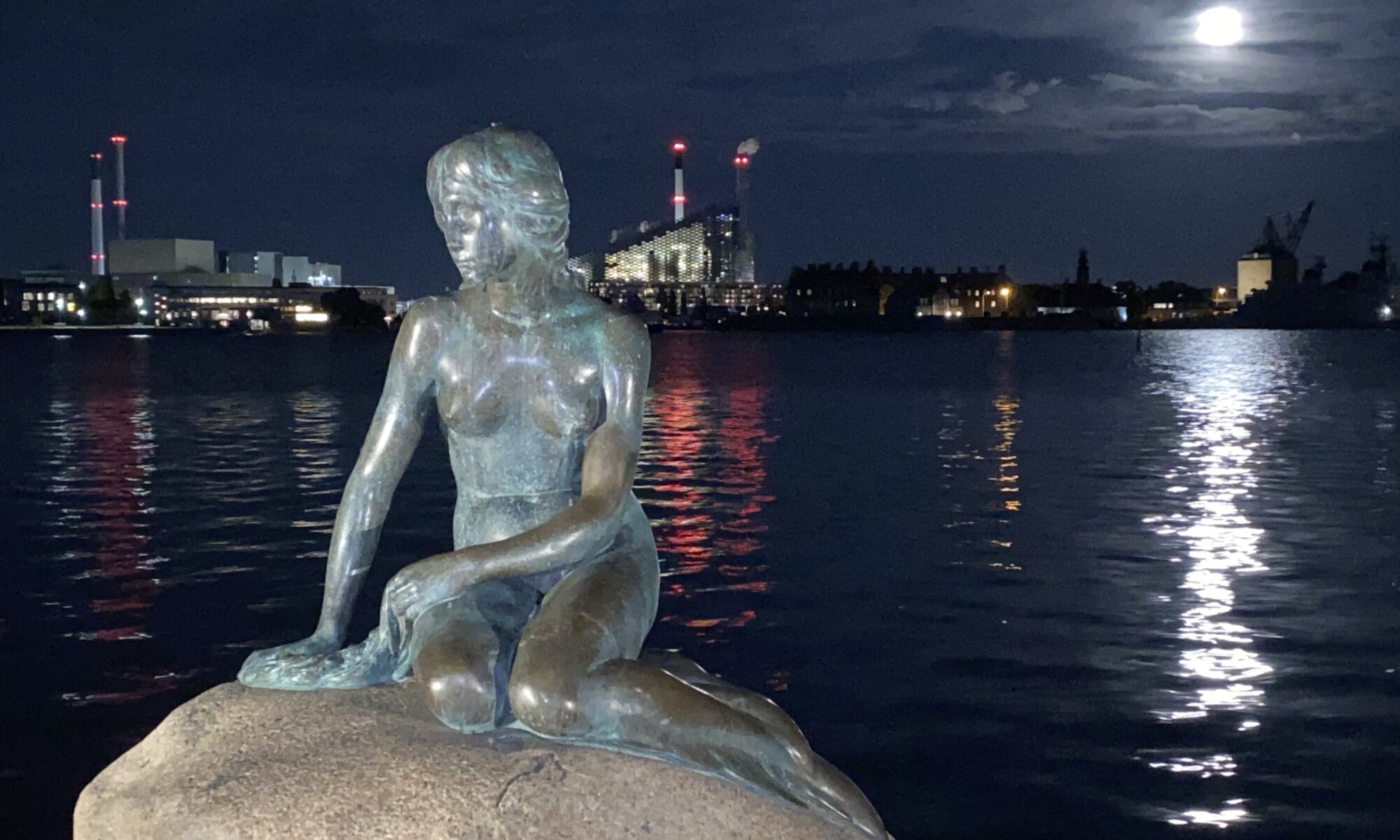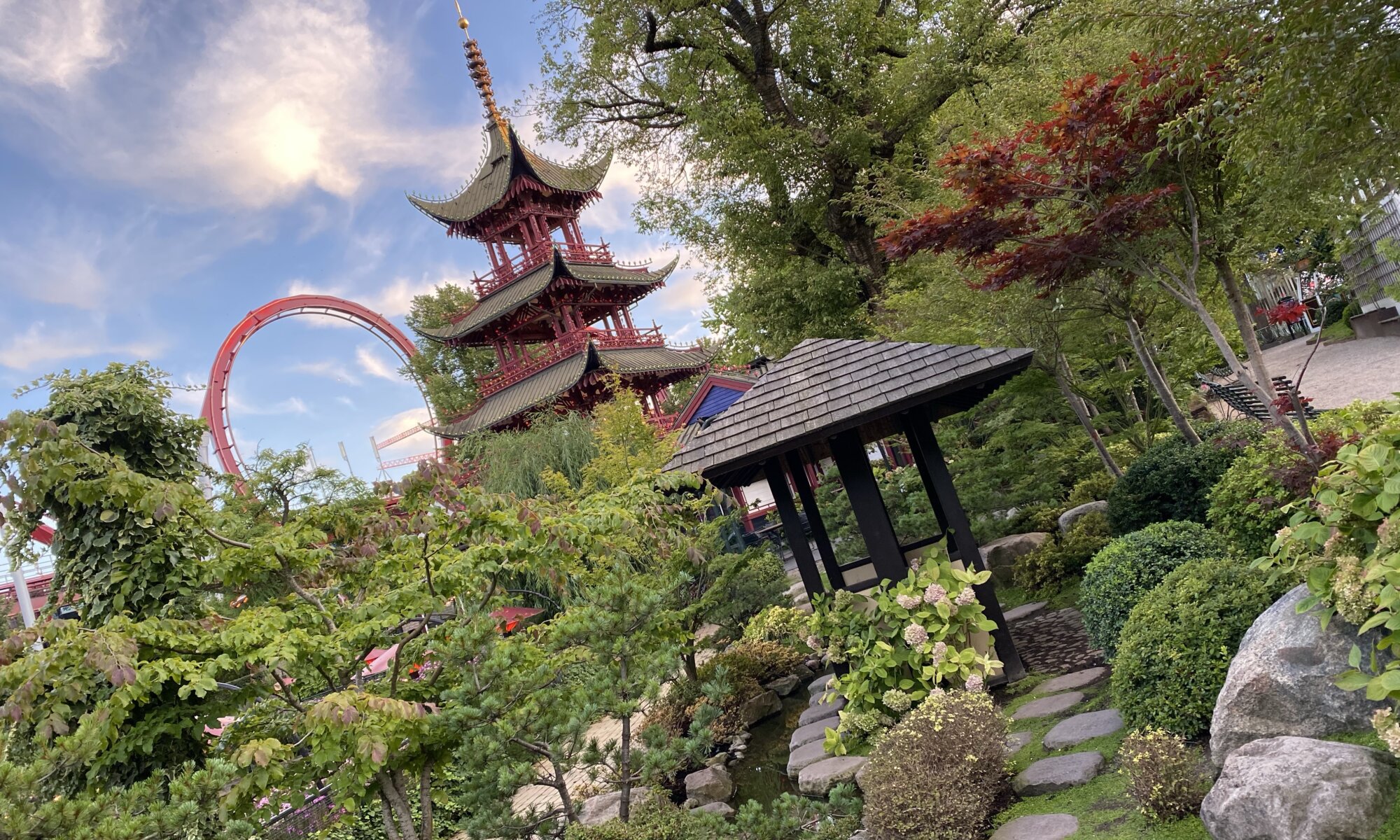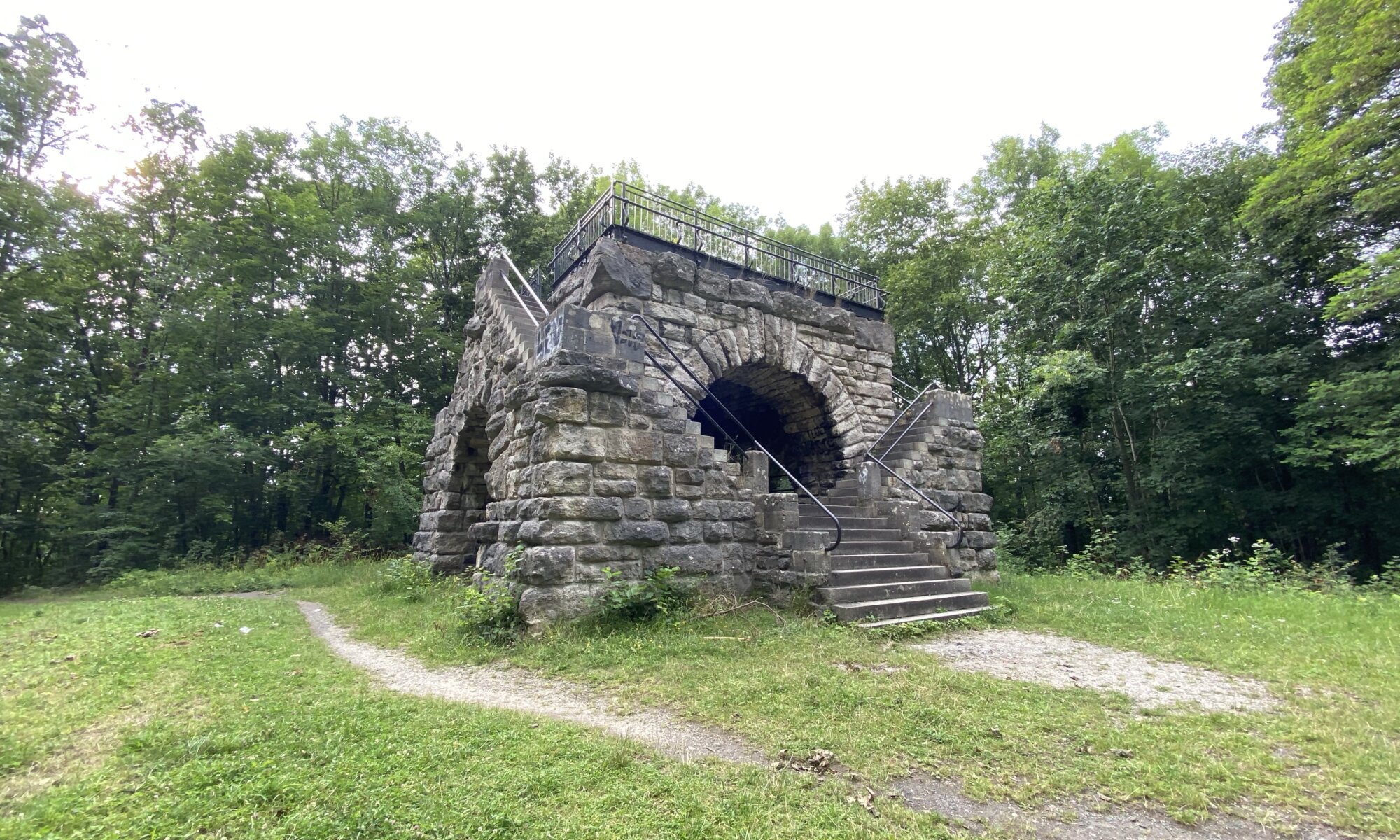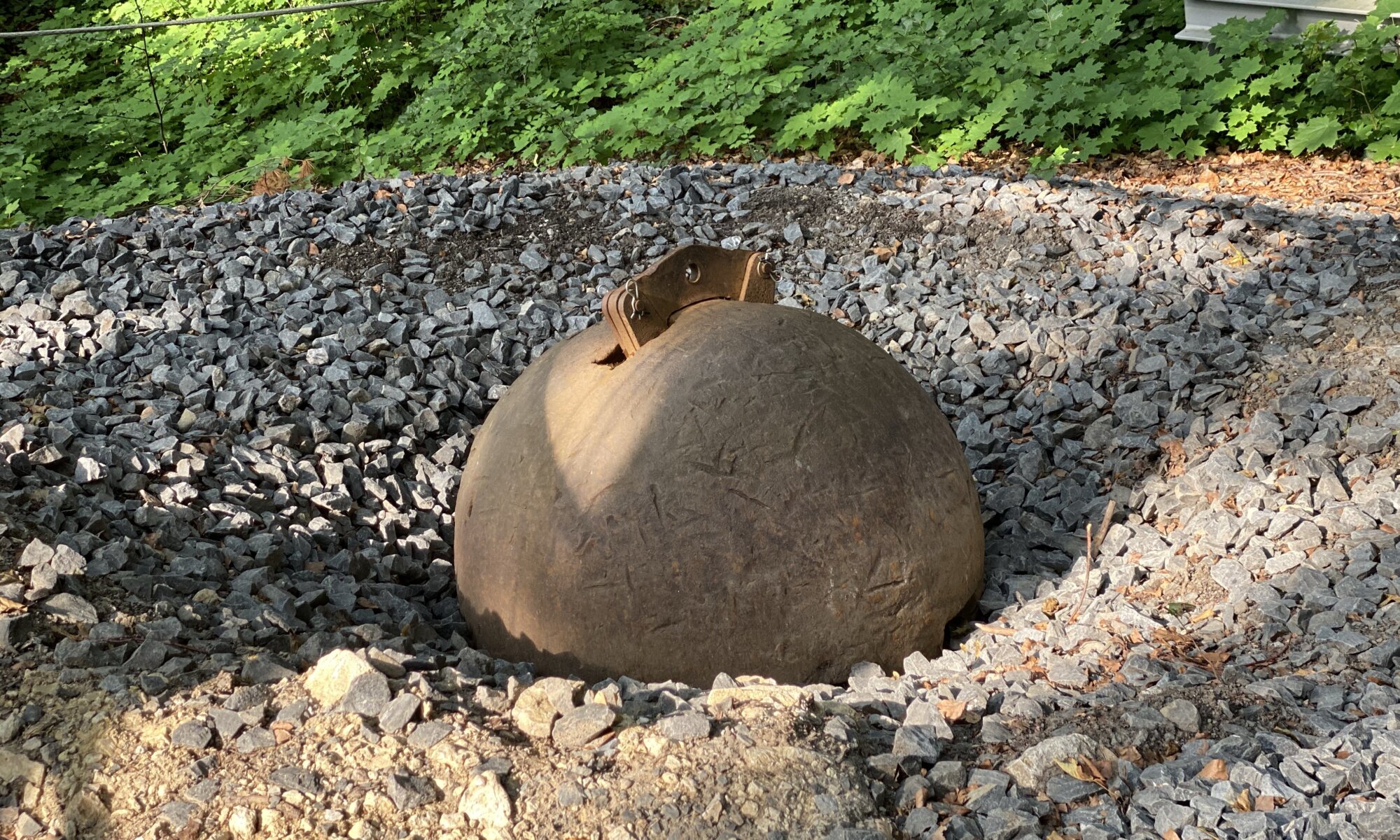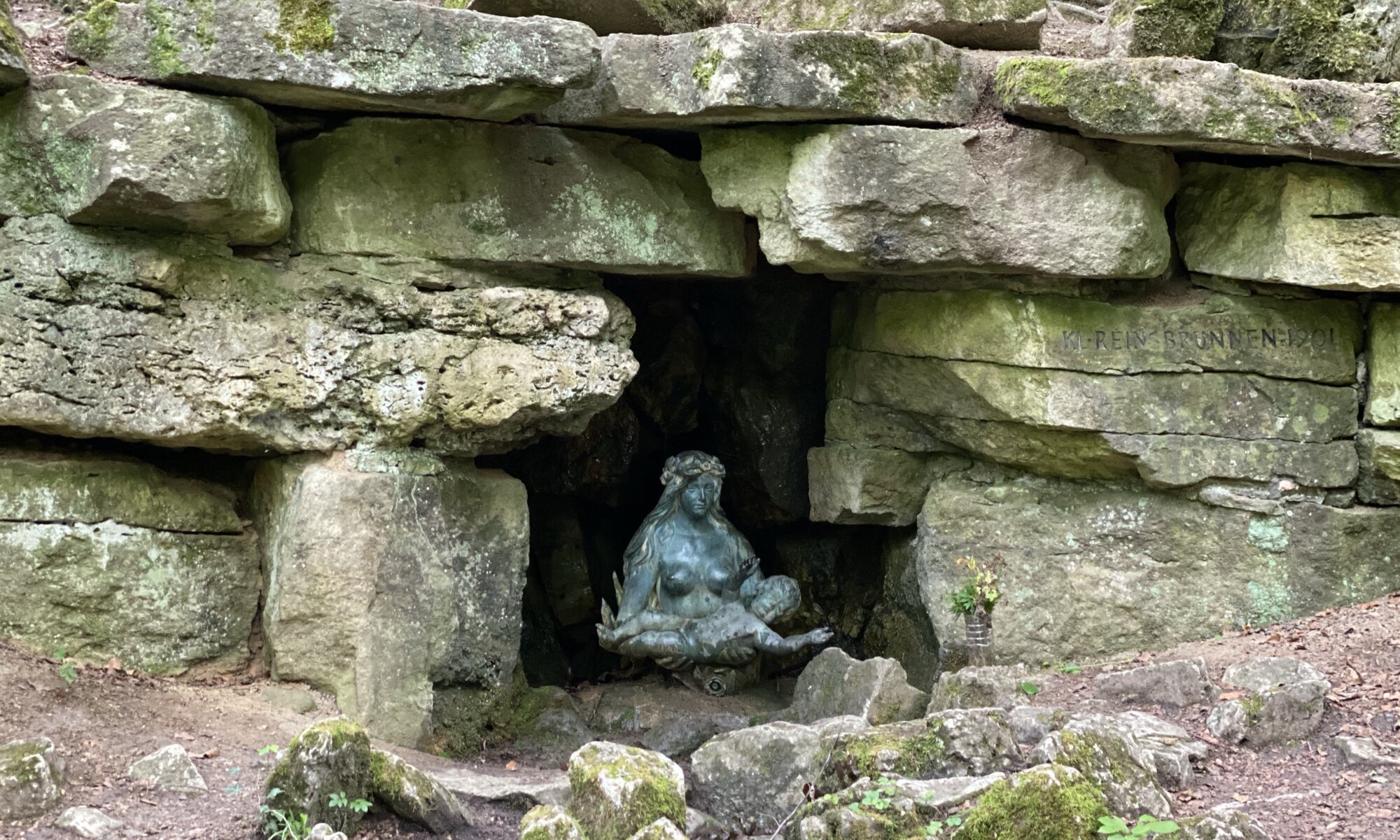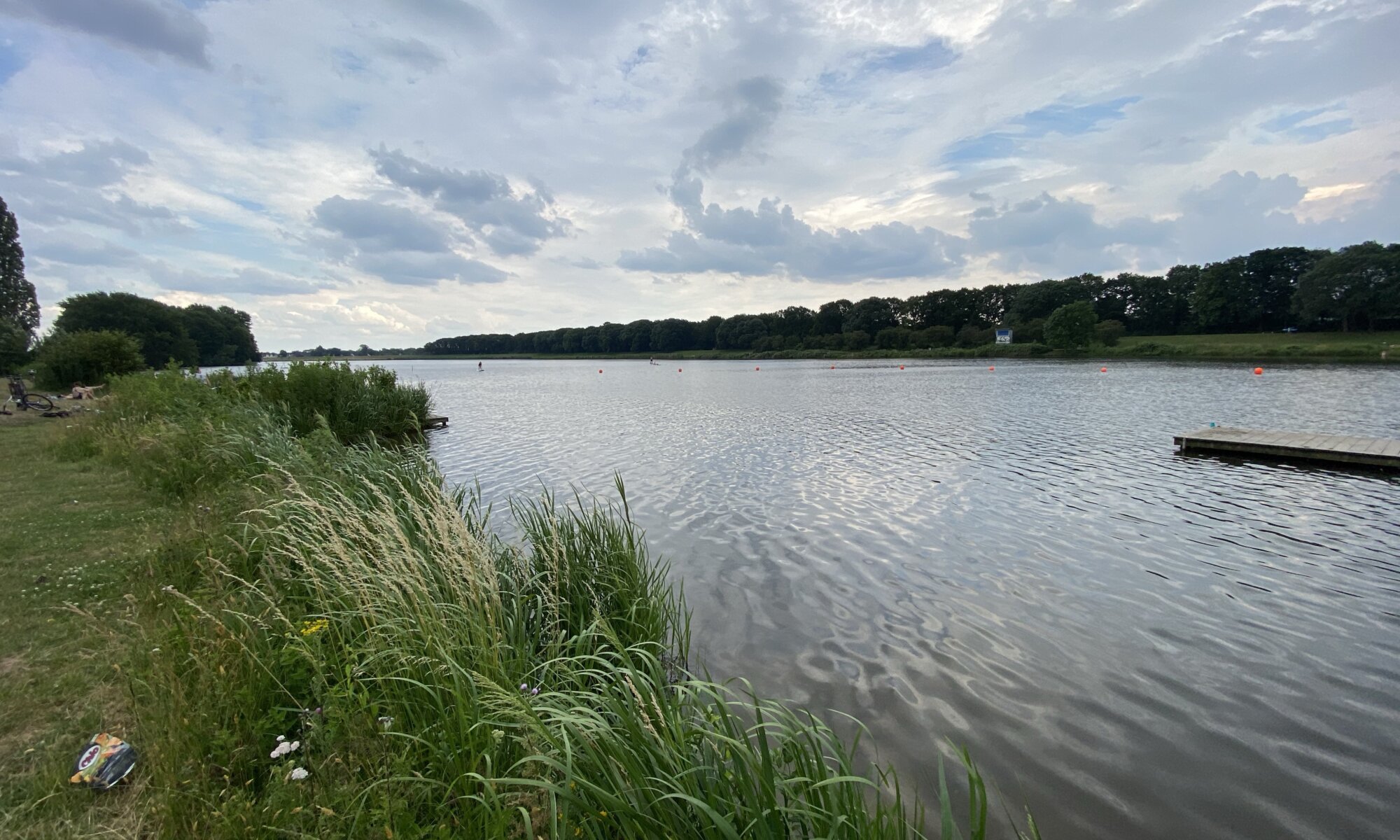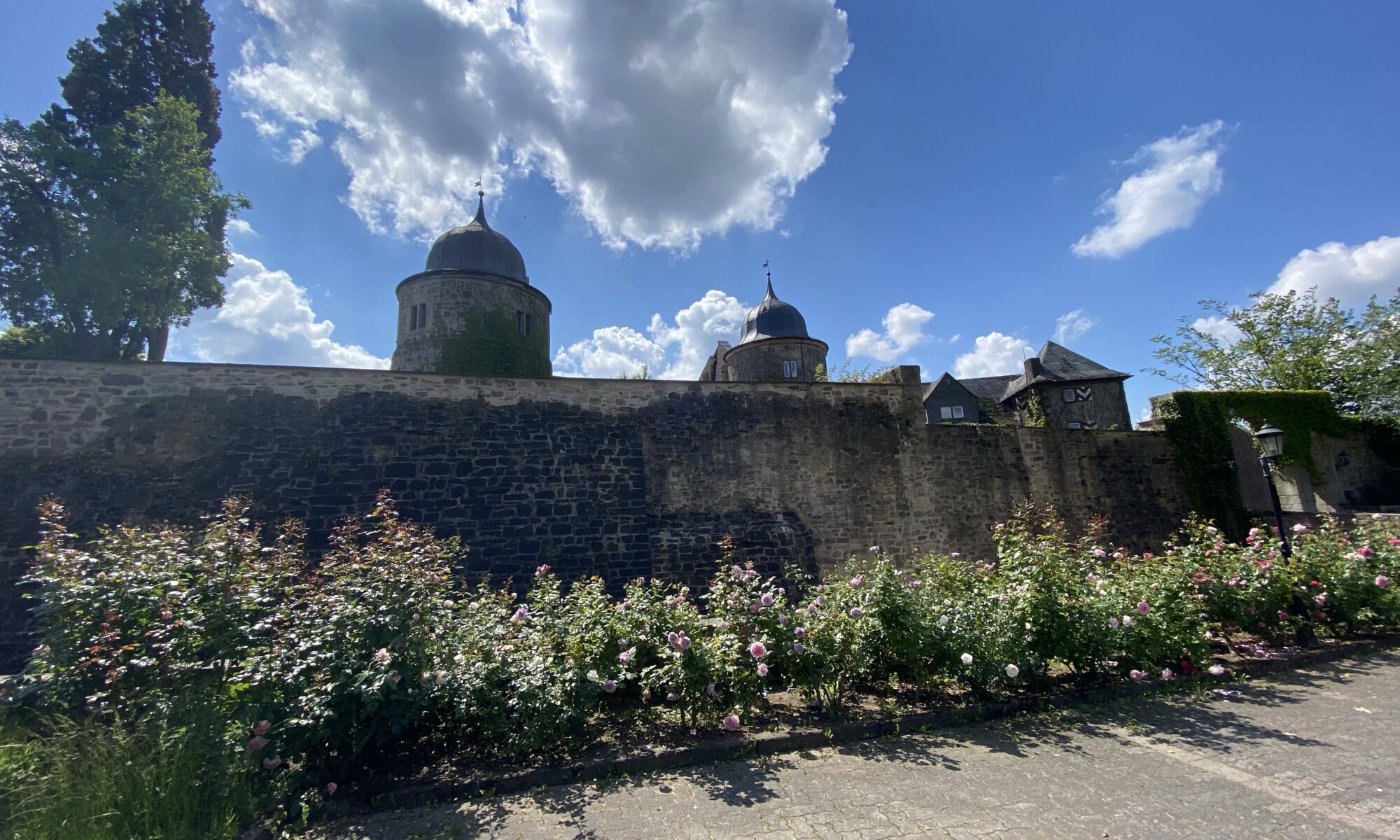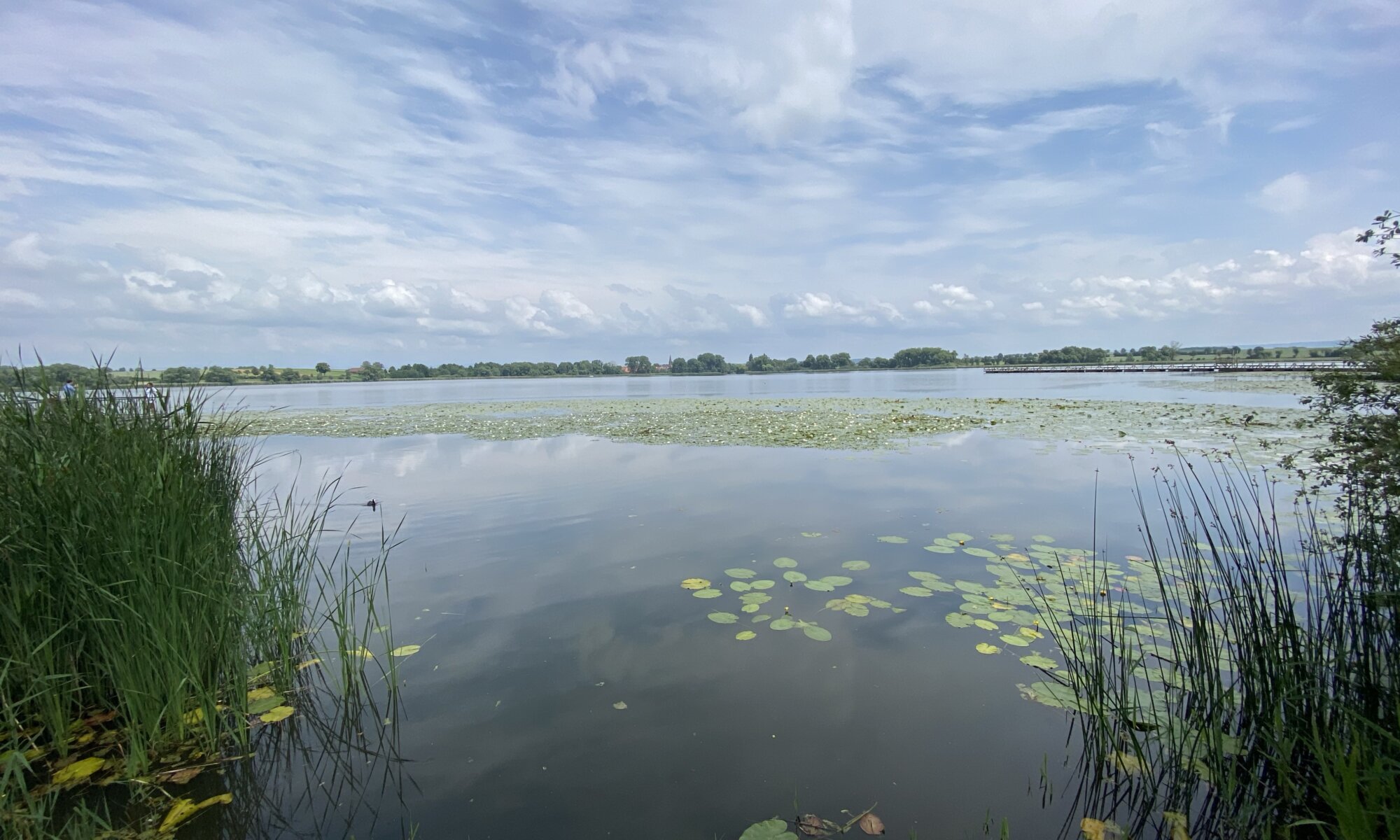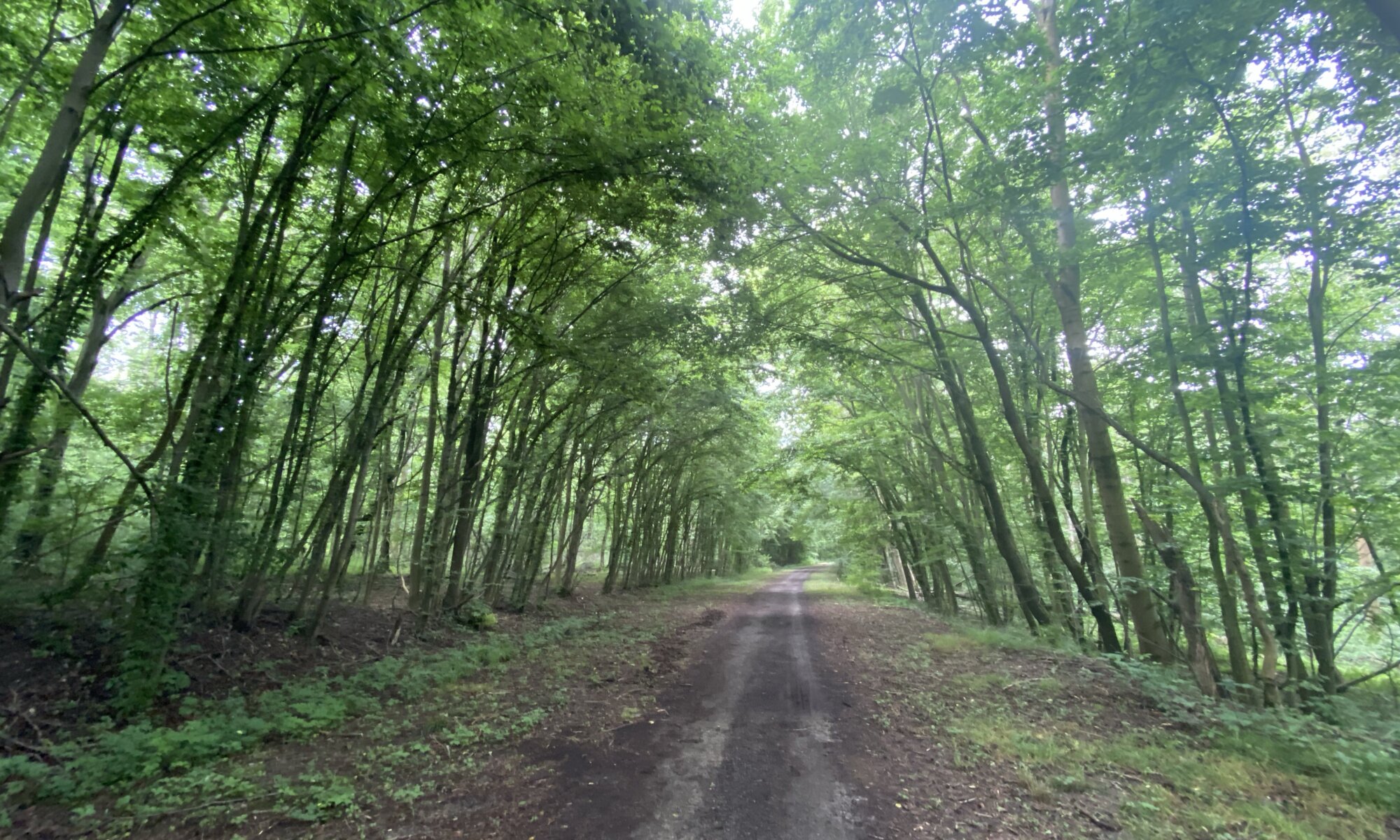If you’re looking for a restaurant or a nice bar to hang out – take a look at the new harbour of København. The Nyhavn was finished in 1673 and already by that time a lot of taverns for the sailors lined up there. Today the tattoo studios and the dark sides with prostitution, burglary and bar fights are gone. If you get there you can see a lot of colourful small houses along the water, enjoy some old ships placed there and take a look at the beautiful illumination in the evening.
Continue reading “Nyhavn”Den Lille Havfrue
The absolute and unquestioned icon of København, Denmark, is a little mermaid located in the harbour of the city. In Danish, it is called Den Lille Havfrue. People often imagine it as much larger but it is a rather small bronze statue (125 cm, 175 kg) sitting on a stone – which becomes more beautiful when it is illuminated at night. It can be found at the Langelinie, north of the city centre.
Continue reading “Den Lille Havfrue”Tivoli
Whenever I talk to people about København one of the first things that come to their minds is the Tivoli. It is quite surprising that an amusement park is a major sight of a capital city but this one is really known throughout the world and it is even one of the oldest in the world. Maybe København is also the only capital city that has such a funfair so close to the city centre – it is located directly next to the main railway station and not far away from the town hall.
Continue reading “Tivoli”Elefantenklo
A strange building made of stone hidden behind high trees in the forest. A temple? A ruin? If you walk around the building on the Klausberg in Göttingen, Germany, you will spot a tiny inscription: ‘Gedenkstein für Otto von Bismarck‘, a memorial for the former imperial chancellor. It is officially called ‘Bismarckstein‘ but the locals have a different name for it: ‘Elefantenklo‘ (elephant loo). Bismarck was very famous by his time even though his role in history has a lot of dark sides – but the people were willing to donate for memorials to commemorate him.
Continue reading “Elefantenklo”Mintrop-Kugel
When you’re hiking on the Warteberg mountain in the east of Göttingen, Germany, you can come across an old earthquake observatory. It is the so-called Wiechert’sche Erdbebenwarte named after the former director Emil Wiechert. The university gave up the building in 2005 but now a private association cares about the legacy of the scientist, including different seismographs that still work. A highlight of this place is a four tons weighing giant: the Mintrop-Kugel.
Continue reading “Mintrop-Kugel”Kleiner Reinsbrunnen
Everybody in Göttingen, Germany, knows the Schillerwiesen – a long stretched park in the East of the city leading up the hill. Most people only know the lower section where people meet for picnics and barbecues, to do sports or play miniature golf. Some get a little bit higher and also see the Jérôme-Pavillion where you can also have your wedding ceremony. Not many people get further on to a more quiet part where you can see the Merkelstein (remembering the former mayor Georg Merkel) and the Kleiner Reinsbrunnen – a nice spring hidden in the forest.
Continue reading “Kleiner Reinsbrunnen”Werdersee
Every city has this recreation zone which locals get to for having a barbecue, swimming, doing sports or just for sunbathing. In Bremen, Germany, it is the Werdersee – an artificial lake created from 1953 on. It is connected to river Weser and has, therefore, a rather good water quality. Formerly it only contained water during high-water flood times, but human intervention made it a nice lake all year round.
Continue reading “Werdersee”Sababurg
The Sababurg is a wonderful old castle within the Reinhardswald forest and belongs to Hofgeismar, Germany. It dates back to the year 1334 and carried different names over time: first, it was the Zappenburg protecting pilgrims, as the Zapfenburg it was later used for hunting. Today you can find a hotel and a restaurant within the grounds of the castle.
Continue reading “Sababurg”Seeburger See
It is called the Eye of the Eichsfeld (the region it is located in) – the lake Seeburger See named after the city Seeburg next to it. You can use this natural lake for boating and swimming but it is rather flat with a maximum depth of 3.5 meters. Better test upfront how deep it is before you jump into the water. 😉 The Seeburger See is a famous tourist destination and you will find good infrastructure at its shore.
Continue reading “Seeburger See”Dransfelder Rampe
If you look at satellite data of the area west of Göttingen, Germany, you can see some unusual slopes of trees. It is the track of the former railway connecting Göttingen to Kassel (Hannöversche Südbahn). via Dransfeld and Hann. Münden – a route that was suboptimal because of the very high inclination in a section called Dransfelder Rampe (‘Dransfeld ramp’). It was nevertheless built because it was the only route from Göttingen to Hann. Münden without leaving the territory of the Kingdom of Hannover. The new route opened in 1876 switches between the German federal states Lower Saxony (formerly Kingdom of Hannover) and Hesse (formerly Kurfürstentum Hessen) several times.
Continue reading “Dransfelder Rampe”